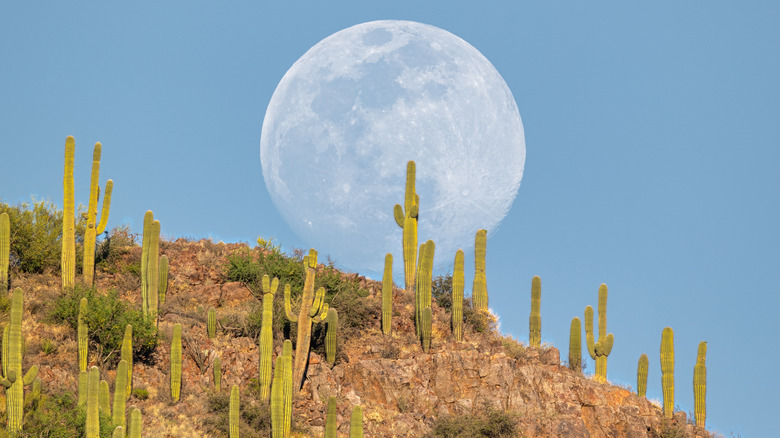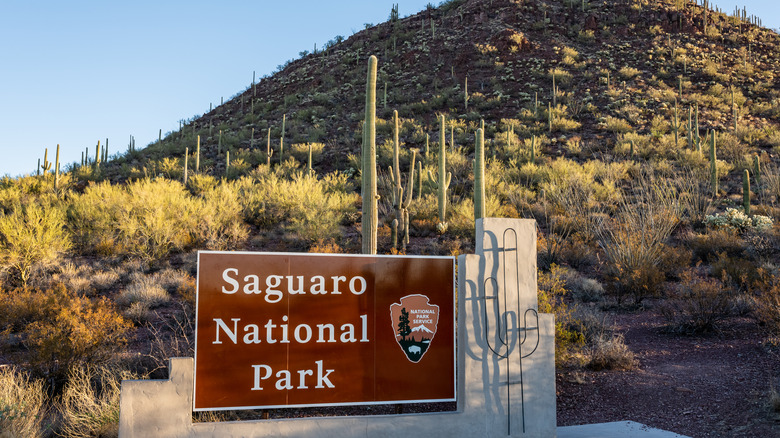Travel Guides Outdoor Adventures
Amanda Morgan
Arizona is known for its breathtaking scenery, world-renowned national parks, and rich Native American culture. You’ll find three national parks within the expansive state, including Grand Canyon, Saguaro, and Petrified Forest. Other natural attractions include state parks and Native American land like Antelope Canyon in the Navajo Nation. Arizona is full of things to explore, like epic canyons and rugged mountains, if you’re looking for an extreme desert vacation — look no further.
In 2022, 40.19 million visitors traveled to Arizona, according to the Arizona Office of Tourism. Tourists from around the world flock to the region, especially during the winter months, to experience the sunshine and the uniquely rugged desert landscape. Among Arizona’s unique flora and fauna is the iconic saguaro cactus, which has become a symbol synonymous with the American West. The majestic towering cacti grow exclusively in the Sonoran Desert, which encompasses a big chunk of Southern Arizona as well as parts of Mexico and California.
Arizona is the perfect destination to view the Saguaro cacti and countless other desert plants — just make sure to keep your hands to yourself. Along with the risk of a nasty poke, messing with the cacti could lead to some serious legal trouble.
Protecting the saguaro

Robert Gallucci/Getty Images
If you mess with a cactus, you might end up with a hefty fine (or even jail time) and rightfully so. The saguaro is the largest cactus species native to the United States. They grow very slowly. It may take a saguaro ten years to grow only a few inches, but they can reach towering heights of around 40-60 feet over time. Scientists estimate that the plants often live 150-200 years if left undisturbed. Long arms stretch upwards in all directions toward the sun, providing much-needed habitat for species like woodpeckers and owls.
While the saguaro is not considered an endangered species, they still face several threats, almost all related to humans. As the population grows and more people relocate to Southern Arizona’s desert, the saguaro faces significant habitat loss. The introduction of non-native ornamental plants and grasses has increased wildfire, which poses a further risk to saguaros.
Luckily, the beautiful giants are protected under the Native Plant Protection Act. Further protections apply to saguaros located within Saguaro National Park. According to state law, it is illegal to cut down, move, or vandalize saguaros and many other native plants. Cutting down a saguaro, even on private property, is a felony and can be punishable with up to 25 years in prison. Vandalizing a cactus, even if you don’t cut it down, can result in fines of up to $5,000 and 6 months of jail time.
The right way to enjoy saguaros in Arizona

Kellyvandellen/Getty Images
Clearly, it’s better to enjoy these gorgeous plants in their natural habitat, where they have survived and thrived for thousands of years. Throughout Southern Arizona, there are plenty of places to admire them in all their glory, and as long as you keep your hands to yourself, you’re sure to have an incredible time.
The best place to get up close and personal with saguaros is Saguaro National Park, which is located in two parcels on either side of Tucson, Arizona. Established in 1994, the park covers 91,327 acres. On a visit to Saguaro National Park, you can explore more than 128 miles of hiking trails, and admire more than 2 million saguaro cacti, according to data gathered in 2020.
For an unforgettable experience, try visiting Arizona when the saguaros are in bloom. The desert transforms during the springtime and erupts in color. Saguaros begin flowering between the ages of 30-65 and produce beautiful blooms that later become fruit. The best time to catch a flowering saguaro is late April through early June. The blooms tend to reach their peak during the final week of May.

